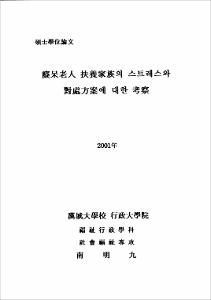癡매老人 扶養家族의 스트레스와 對處方案에 대한 考察
- Files in This Item:
-
-
Download
 000000066076.pdf
기타 데이터 / 2.32 MB / Adobe PDF
000000066076.pdf
기타 데이터 / 2.32 MB / Adobe PDF
-
Items in Repository are protected by copyright, with all rights reserved, unless otherwise indicated.
 000000066076.pdf
기타 데이터 / 2.32 MB / Adobe PDF
000000066076.pdf
기타 데이터 / 2.32 MB / Adobe PDFItems in Repository are protected by copyright, with all rights reserved, unless otherwise indicated.